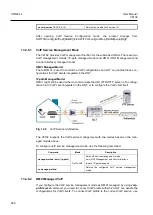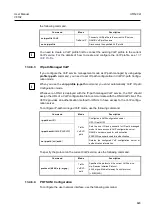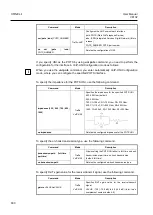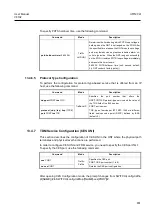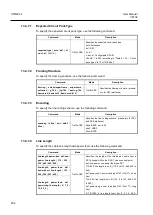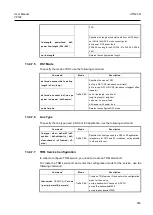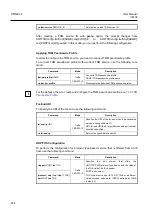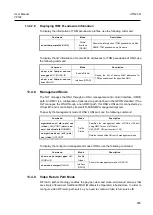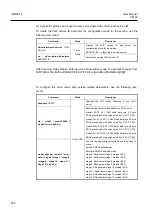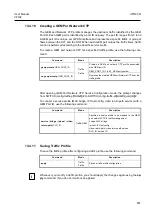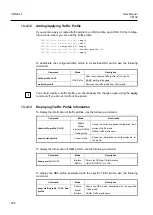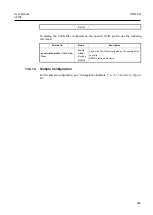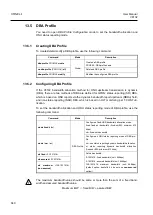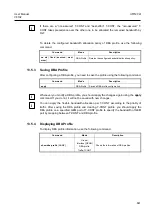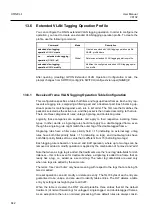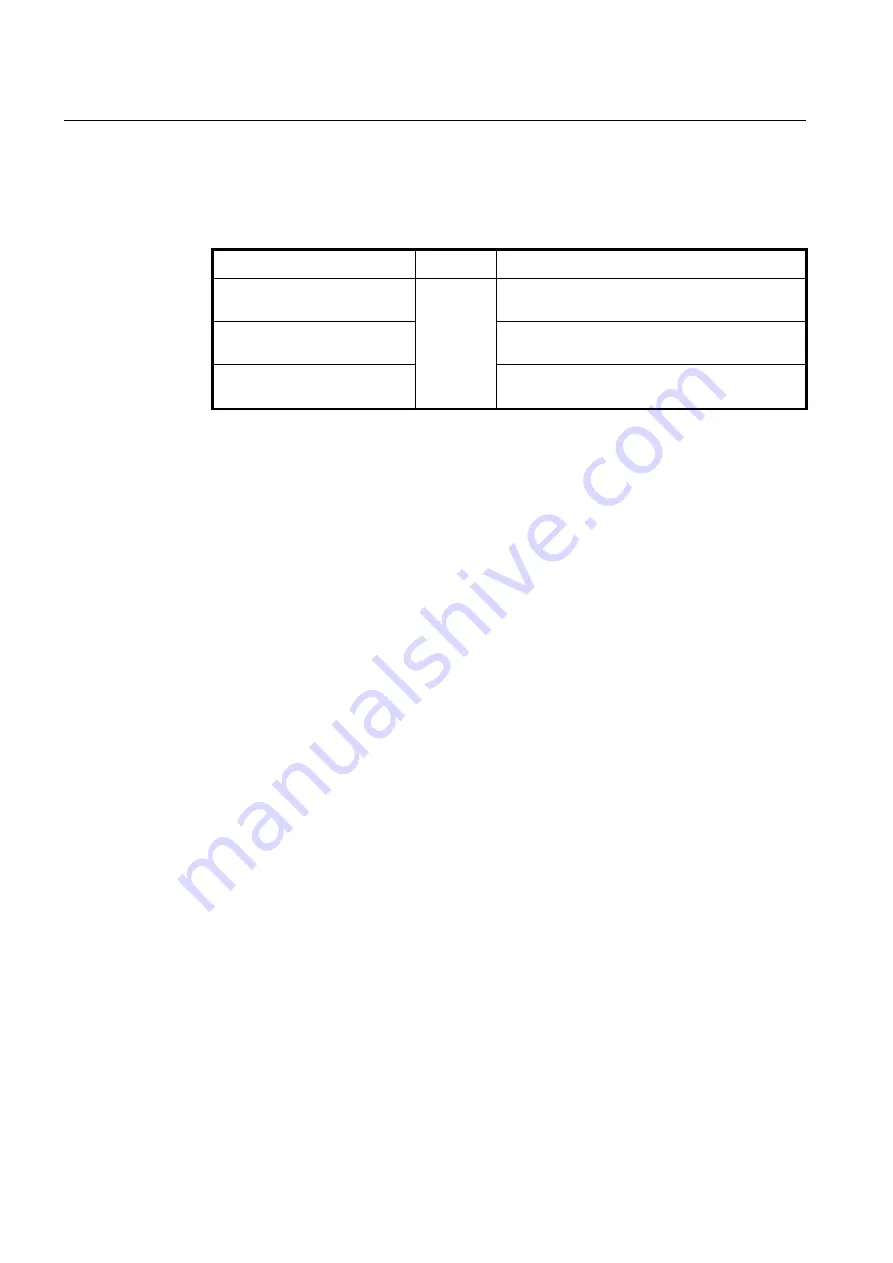
UMN:CLI
User Manual
V8102
842
13.6
Extended VLAN Tagging Operation Profile
You can configure the ONU
’s extended VLAN tagging operation. In order to configure the
operation, you need to create an extended VLAN tagging operation profile. To create the
profile, use the following command.
Command
Mode
Description
extended-vlan-tagging-
operation NAME create
Global
Creates an extended VLAN tagging operation profile.
NAME: profile name
no
extended-vlan-tagging-
operation
{
NAME
|
all
}
Deletes an extended VLAN tagging operation profile.
extended-vlan-tagging-
operation NAME modify
Modifies the configured extended VLAN tagging opera-
tion profile.
After opening (creating)
GPON Extended VLAN Operation Configuration
mode, the
prompt changes from SWITCH(config)# to SWITCH(config-ext-vlan-oper[
NAME
])#.
13.6.1
Received Frame VLAN Tagging Operation Table Configuration
This configuration specifies a table that filters and tags upstream frames. Each entry rep-
resents a tagging rule, comprising a filtering part and a treatment part. Each incoming up-
stream packet is matched against each rule in list order. The first rule that matches the
packet is selected as the active rule, and the packet is then treated according to that rule.
There are three categories of rules: untag, single-tag, and double-tag rules.
Logically, these categories are separate, and apply to their respective incoming frame
types. In other words, a single-tag rule should not apply to a double-tagged frame, even
though the single-tag rule might match the outer tag of the double-tagged frame.
Single-tag rules have a filter outer priority field = 15 (indicating no external tag), untag
rules have both filter priority fields = 15 (indicating no tags), and double-tag rules have
both filter priority fields set to a value that is different from 15 (indicating two tags).
Each tagging rule is based on 'remove' and 'add' operation, where up to two tags can be
removed or added. A modify operation is applied by the combination of 'remove' and 'add'.
Note that when a single tag is added, the treatments use the 'inner tag' data-fields for def-
initeness
– this is true even for treatments where a single tag is added to a frame that al-
ready has a tag, i.e., added as a second tag. The 'outer tag' data-fields are used only
when two tags are added by the same rule.
The terms 'inner' and 'outer' only have meaning with respect to the tags that are being fil-
tered or added.
One set operation can add, modify or delete one entry. The first 8 bytes of each entry are
guaranteed to be unique, and are used to identify table entries. The OLT deletes a table
entry by setting its last eight bytes to all 0xFF.
When the table is created, the ONT should predefine three entries that list the default
treatment (of normal forwarding) for untagged, single-tagged, and double-tagged frames.
As an exception to the rule on ordered processing, these default rules are always consid-
Содержание V8102
Страница 1: ...1 V8102 GPON OLT system User Manual...
Страница 158: ...UMN CLI User Manual V8102 158 When you use the no snmp command all configurations of SNMP will be lost...
Страница 427: ...User Manual UMN CLI V8102 427 show debugging dhcp Enable Global Shows the debugging information of DHCP...
Страница 797: ...User Manual UMN CLI V8102 797 show onu gsp status config ONU_ID tag list number TAG_NAME tag name...

